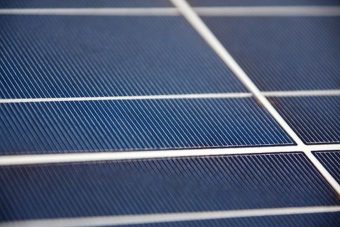
A new solar summer rises from the ashes of nuclear winter. Two Chinese energy firms will be constructing a new solar power plant in the exclusion zone near the Chernobyl nuclear reactor, which suffered a powerful explosion in 1986 that poisoned the surrounding area with nuclear radiation. “There will be remarkable social benefits and economic ones as we try to renovate the once damaged area with green and renewable energy,” said Shu Hua, the chairman of GCL System Integration Technology (GCL-SI), one of the firms tasked with the project. Making the best of a bad situation could prove inspiring to others as the global community begins the hard work of implementing the Paris Agreement.
A 1,000 square mile exclusion zone of forests and marshland surrounds the former Chernobyl nuclear reactor in Ukraine and has been largely off-limits since the 1986 disaster. The reactor itself will be covered next year by a $1.6 billion steel arch. GCL-SI has not revealed details regarding where the new solar power plant will be built or how much it will cost. However, GCL-SI management states that the project will be safe for workers. “Ukraine has passed a law allowing the site to be developed for agriculture and other things, so that means (the radiation) is under control,” said a manager who spoke anonymously.
The Chinese firms in charge of building the solar power plant are attempting to build up an international presence and reputation for clean energy excellence. Even before their Chernobyl project, the Chinese have successfully reformatted contaminated land into renewable energy generators. To discourage urban expansion from absorbing more farmland, China has implemented policies that encourage solar and wind power plants on damaged land, including in Shanxi, the country’s top coal province. With 43 gigawatts of generating capacity expected by the end of the year, China is currently the world’s top solar power generator. In the race towards global energy dominance, China is also well ahead. 72 percent of the global solar power components produced in 2015 were made in the People’s Republic.
Source: inhabitat.com
